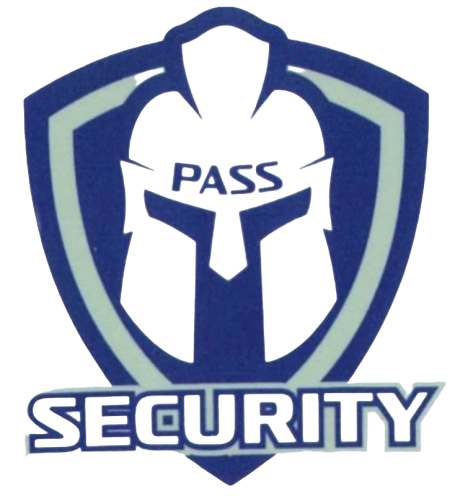PPCT Threat Pattern Recognition Use of Force
Handcuffing, baton and arrest and control tactics for protection professionals
The Defensive Tactics Threat Pattern Recognition (also known as Pressure Point Control Tactics, or PPCT) course teaches the physical mechanics of the use of force and arrest and control. It is required by most employers before staff are permitted to handle handcuffs, and it is required by the Alberta government before staff are permitted to carry a baton. This international program is the industry standard on this content and has been developed with decades of research in the law enforcement field.
SECURITY GUARD TACTICAL HANDCUFFING TRAINING
This course has been designed to provide you with a solid foundation of understanding the dynamics of protection while working as a peace officer or a security guard. It focuses on your ability to identify threat indicators leading up to an incident, proper positioning for safety, match appropriate uses of force to situations, and understand the legal responsibility you have in these situations.
For basic information about what equipment is provided on the job, and purchasing handcuffs and batons, please see the article: Duty Gear for Security Jobs.
CERTIFICATION
Duration: 24 hour course over three days.
Tuition: $300 + GST
Certification: Issued by PASS, valid for 1 year. Recertification is required annually.
The course covers portions of the PPCT Defensive Tactics Course Program including:
- Use of Force Human Factors
- Control Principles
- Tactical Handcuffing
- Escort Position and Joint Lock Control
- Pressure Point Control Tactics
- Defensive Counterstrikes
Upon completion of this program, the student should be competent in all physical training techniques and have a working knowledge of use of force, the impacts of stress on the body and mind-set required to be successful working in protective services. The certificate issued for successfully attending this course is valid for a one year period from the last day of the course.
Requirements: A Security License, By-Law enforcement OR employed with SLGA qualified (ie. Casino/Bar) required and must be shown to the instructor at the beginning of class.
RE-CERTIFICATION
Duration: 8 hour course over 1 day, Sunday
Tuition: $180 + GST, additional fee if you require the current student book.
Certification: Issued by PASS, valid for 1 year. Recertification of this course is required annually, and proof of training in the previous 12 months will be required.
The course includes lectures and physical review uses of force. You will be expected to review your manual prior to the course to prepare for the written exam.
Requirements: You will need to supply the instructor with proof of your current PPCT Certification from previous course, at the beginning of class. Exceptions on previous trainers will be considered on a case by case basis. Please email us to ask about your previous training and provider to see if it qualifies.
SECURITY GUARD TACTICAL HANDCUFFING AND IMPACT WEAPON/COLLAPSIBLE BATON TRAINING
CERTIFICATION
To have approval to use a baton, it is a requirement from the Government of Saskatchewan, Ministry of Corrections, Policing and Public Safety to take the full 40 hour approved training program, and have the additional qualification on your Security Services license. To use a baton for your specific job, you MUST have approval from your current employer.
Duration: 40 hour course over 5 days.
Tuition: $500 + GST
Certification: Issued by PASS, valid for 1 year. Recertification is required annually. Recertification for licensing with the government is 1 year.
Use of Force PPCT: handcuffing and baton
This course covers:
- Use of Force Human Factors
- Control Principles
- Tactical Handcuffing
- Escort Position and Joint Lock Control
- Pressure Point Control Tactics
- Defensive Counters trikes
- Shoulder Pin Restraint System
- Impact Weapon / Collapsible Baton System
- Weapon Retention and Disarming
Upon completion of this program, the student should be competent in all physical training techniques and have a working knowledge of use of force, the impacts of stress on the body and mind-set required to be successful working in protective services. The certificate issued for successfully attending this course is valid for a one year period from the last day of the course.
Requirements: A current Security License, By-Law Officer OR employed with SLGA qualified (ie. Casino/Bar) required and must be shown to the instructor at the beginning of class.
RE-CERTIFICATION
Duration: 24 hour course over 3 days.
Tuition: $300 + GST
Certification: Issued by HFRG, valid for 1 year. Recertification of this course is required annually, and proof of training in the previous 12 months will be required. Recertification for licensing with the government is 1 year.
This recertification allows students the opportunity to review their PPCT Course Studies. Arrest and control skills are like any other perishable skill. They must be kept in the short term memory to be effective. We work through the program reviewing and polishing skills to ensure that you are confident again on their application. Many agencies do not offer the opportunity to refresh yourself on these skills. Tip of Spear recognizes this and wants you to have the ability to stay current with your certification.
Requirements: You will need to supply the instructor with proof of your current PPCT Certification from previous course at the beginning of class. Exceptions on previous trainers will be considered on a case by case basis. Please email us to ask about your previous training and provider to see if it qualifies.
A current Security License, By-law Officer OR employed with SLGA/SIGA qualified (ie. Casino/Bar) required and must be shown to the instructor at the beginning of class.

About Human Factor Science
Human Factor Science has been conducting cutting edge research and developing critical training for over 40 years, including high risk and precision human factors, using pressure points in defensive tactics, the correlation of threat pattern research to firearms and defensive tactics, and how survival stress impacts performance. This training has been delivered to hundreds of municipal, state and federal law enforcement agencies, intelligence and government special operations agencies, and many of the concepts are now widely incorporated in performance-based training many different military sectors. They are an international authority on these subjects and continue to develop research and training.
Why We Teach THIS Program
There are several Use Of Force programs out there, so why have we chosen to teach this specific program for more than 20 years? Defensive Tactics is:
- Accredited by the Government of Saskatchewan, Ministry of Corrections, Policing and Public Safety.
- A standardized, international program scientifically researched, developed and proven in the field for almost 40 years. Hundreds of instructors and experts teach this to hundreds of law enforcement and private agencies all over North America and keep the content updated and relevant. Other programs do not have this longevity, scientific approach nor proven in the field.
- Emphasizes the legal limits and ramifications of using physical force in your security or peace officer role and is backed and proven if the individual or company ever was charged or sued over excessive use of force.
- Legally sound to be able to justify use of force in court.
- A medically safer method of approaching subjects, one which limits injury to the subjects.
- A practical and tactically safer method of approaching subjects which is better designed for a greater variety of roles with different levels of authority. Other programs teach a more direct, aggressive approach which may put the staff member at risk.
- More accessible for all genders and body types and is preferred by new guards as it is easier to learn.
We stand firm on our prices as we know the quality we put into our programs and the capabilities and confidence of our students who complete them. When evaluating programs for your organization, please ask questions and consider the content beyond just the price.
Duty Gear for Security Jobs
So you've got your Security Services License and have either gotten a security guard job or are still searching for one. You may be wondering: what equipment will I need to have for the job? What gear do I need to purchase and what will be provided to me by my employer? We will cover all the basics and more for you here.
The duty gear (equipment) you will be required to have will be dependent on the specific job functions of your role at the company you work for. Most employers will do a risk assessment based on your job and duties and issue you any required equipment. Sometimes they may ask you purchase specific items and will provide you a letter in order to do so for specific equipment.
The most important thing is to ask what your employer will provide you and what they expect you to buy before you start your job.
The following list of equipment is in rough order of importance and likeliness of what you will need based on the most common types of security jobs available.
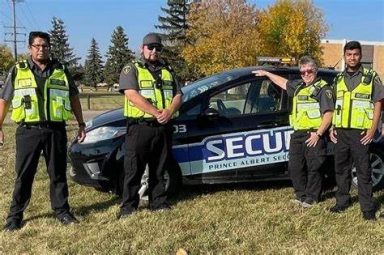
Uniform
Almost all security guard positions will require you to wear a standard company-issued uniform and will provide one for you. This helps others identify who you are and your role quickly. It also adds a level of professionalism and respect. This could include a shirt and pants, or perhaps a simple t-shirt. One of the only situations where you may not need to wear a uniform is if you are under cover as a loss-prevention worker.

Long Handcuff Key
Handcuffs come with handcuff keys but if you are going to be using handcuffs on a regular basis, we highly recommend that you purchase a long handcuff key as well. Under stress, our finite motor skills disappear which makes it extremely difficult to perform small accurate movements and use small handcuff keys. The large handcuff keys are much easier to handle under stress. These are only $12-14. You will need your security license to purchase these as well.
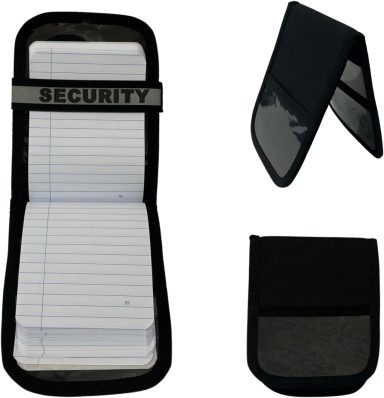
Notepad, Case & Pen
It is absolutely crucial to be able to record details of incidents such as names of subjects, times, etc. as part of any security job. Even if your employer has an electronic system for taking notes and producing reports, we highly recommend that you still have a good old-fashioned notepad, notepad cover (to protect the life of your notepad), and pen as a backup just in case you phone or other electronic device runs out of power or cannot connect to the internet. A case costs approximately $15 - $20. Notepads are approximately $5 - $10.
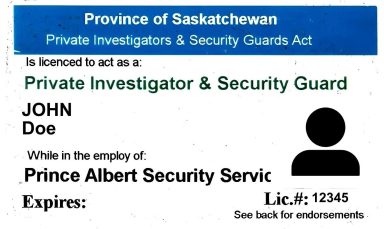
Security License
In Canada, security guards must indeed carry a license to work legally. This requirement ensures that they meet specific training and ethical standards to perform their duties responsibly and safely. Regulations can vary from province to province. For instance, in Saskatchewan, security guards must hold a valid security guard license issued by the Saskatchewan Ministry of Justice. This involves completing mandatory training and passing an exam.
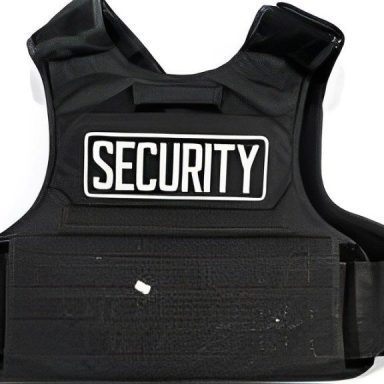
Body Protection
Slash/stab-resistant vest are usually company issued, but even if they're not in your case, you may still want to purchase one for their own peace of mind. You will need to show your Security Services Licence and a letter from your agency and/or if you are required to purchase a slash/stab-resistant vest. Vests run $150 - $300
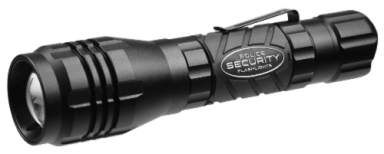
Flashlight
Of all the equipment that is most helpful and that we recommend for every security guard, it is a flashlight. It is a multi-purpose tool that can increase visibility (even during the day if you are indoors or have to search inside a bag for example), and also be a self-defense tool. You must be able to grip it comfortably into your hand. It must be small enough so that you can apply handcuffs while holding it (if arrests are part of your job) yet long enough that you can tuck it under your arm to keep your hands free. It should be LED and very bright (at least 110 Lumens), with the ability to have several intensity settings. It should also have a strong metal (not a plastic) casing. If your employer doesn't supply you with one, we recommend spending $50 - $100 to buy a good one for yourself.

Radio & Holder
Your employers will likely supply you with some form of communication device, in the event of an emergency and you need backup. A 2-way radio is the most common method of communication, or they may ask you to use your own cellphone. If they provide you a radio, they should also provide you some way to carry it, like a holder you can attach to your duty belt or case.

Baton & Holder
Batons are striking devices intended to stun and temporarily disable a subject who poses an immediate threat. You must take an approved training course, have this qualification added to your licence and get approval from your employer before you are permitted to carry a baton on the job. Typically if one is required for your job, your agency will issue you one and will require you to keep it at the job. You will need to show your Security Services License (with the Use of Baton qualification on it) and a letter from your agency if you are required to purchase a baton. Batons are typically retractable and come in various lengths. The standard is 26 inches, but you may need to purchase a shorter or longer one based on the specific environment you may be working in (such as a shorter one for working in closed quarters). Most baton are expandable and are made of steel or carbon-fibre. There are several popular brands, including Monadnock (industry-standard) and ASP (such as the Talon Airweight model). There are several mounting systems including side-pole application (quick release) and straight pull-out.

Duty belt
A duty belt carries all the small gear on this list. It is usually issued by your employer if it necessary for your job, but if they don't provide one, you can purchase one for yourself if you like. Most quality duty belt sets are made up of an inner velcro, and outer duty belt with a clip closure. Your inner belt holds up your pants, and your outer belt hold all your gear. Inner belt is approximately $20. Outer belt is $35 - $70.

Search Gloves
Search gloves are a necessary tool to protect yourself when you are performing any kind of searches. They should be slash, cut and puncture resistant to protect your hand from accidentally being jabbed with a knife or needle when doing searches inside pockets, bags or other belongings. They are typically made of leather or Neoprene shells, with a cut resistant lining of Spectra blend or Kevlar. If searches are part of your role, you will likely be issued gloves. We recommend purchasing a pair regardless, for your own safety. A good pair are $60 - $85. A case for them is $9 - $25.

Boots
Security boots are essential footwear for security personnel, providing the necessary support and protection to perform their duties effectively. These boots are designed with comfort in mind, featuring cushioned insoles and ample arch support to alleviate fatigue during long shifts. Durability is a key factor, as security boots are often constructed from high-quality materials that withstand daily wear and tear. Waterproof capabilities ensure that security guards remain dry and comfortable in various weather conditions. Additionally, non-slip soles offer excellent traction, reducing the risk of slips and falls. With these attributes, security boots are a vital component of a security guard's uniform, ensuring both safety and performance.
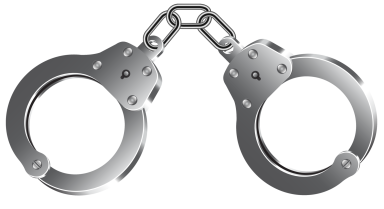
Handcuffs
If your job is "hands-on" meaning you may be required to make arrests, you will likely be issued handcuffs by your employer. In the event that they require you to purchase your own, here are some things to know. You will need to show your Security Services License to buy handcuffs. There are many different styles and sizes of handcuffs but the most common used are chain-link handcuffs. The style you buy should be based on the specific job and application. Quality is crucial when choosing which ones to buy as you don't want them falling apart in the middle of an arrest when you need them most. Not all are good quality so don't buy based on price only. Smith and Wessons are recommended, as the Edmonton Police Service uses these. We don't recommend purchasing handcuffs with plastic double-bar as they can bend or break. A good set of handcuffs are $50 - $80.
©Copyright 2025. All rights reserved by Prince Albert Security Services
We need your consent to load the translations
We use a third-party service to translate the website content that may collect data about your activity. Please review the details in the privacy policy and accept the service to view the translations.
